Once again about Khalkhin Gol
77 years have passed since the Japanese forces were defeated in the area of the Khalkhin Gol River. However, interest in this armed conflict among historians, exploring a complex set of problems related to the causes of the Second World War, continues. The search continues for more accurate and reasonable answers to the questions: the conflict arose randomly or deliberately organized, what were its causes, which side initiated and what goals did it pursue?
The point of view of Japanese military historians was set forth in the “Official stories War in the Great East Asia. It is based on the assertion that it was a border conflict that the Soviet leadership used "to attack the Japanese army, wanting to deprive it of hopes of victory in China and then focus all its attention on Europe." The authors say that in the USSR they knew very well that the Japanese government, immersed in military operations in China, did everything possible to prevent new border conflicts. However, some Japanese researchers still consider this an armed clash, deliberately organized by the anti-Soviet-minded military, especially the command of the ground forces and the Kwantung Army. To determine the causes of this conflict, it is necessary to briefly consider the events preceding it.
In the early autumn of 1931, Japanese troops occupied part of Manchuria and approached the Soviet state border. At this time, the General Staff of the Japanese Army was adopting the “Basic Provisions of the Plan of War against the USSR”, providing for the advancement of troops of the Rising Sun east of Greater Khingan and the early defeat of the main forces of the Red Army. At the end of 1932, a plan of war against our country was prepared for 1933, which envisaged the consistent defeat of the Red Army units, the liquidation of the Soviet Far Eastern air bases and the occupation of the Far Eastern main line to the borders of Manchuria.
The Japanese military-political leadership took into account that by the mid-thirties, the USSR was able to significantly increase its defense capability in the Far East, and therefore decided to make an alliance with Germany. In a secret decision of the Japanese government from 7 August 1936, it was noted that with respect to Soviet Russia, the interests of Berlin and Tokyo generally coincide. German-Japanese cooperation should be aimed at ensuring the defense of Japan and the "implementation of the fight against the Reds". 25 November 1936, the Japanese Foreign Minister, Arita, at a meeting of the Privy Council that ratified the prisoner of the Anti-Comintern Pact, announced that from now on the Russians must realize that they have to be face to face with Germany and Japan. The presence of allies in the West (Italy joined the pact in 1937) inspired the Japanese ruling circles to unwind the flywheel of military expansion in Asia, aimed primarily against China and the USSR.
7 July 1937 was triggered by an incident at the Lugouqiao Bridge near Beijing, which became a pretext for the start of large-scale military operations against China. The Western powers pursued a policy of de facto connivance of the aggressor, hoping for a Soviet-Japanese clash. 26 August 1937 said quite frankly about this in an interview with the American ambassador in Paris by Bullitt, French head of the French Foreign Ministry Delbos: “The Japanese offensive was primarily directed not against China, but against the USSR. The Japanese want to seize the railway from Tianjin to Beipin and Kalgan, in order to prepare an attack on the Trans-Siberian railway in the Baikal area and against Inner and Outer Mongolia. ” Such a vision of the French minister was hardly an accident. In the West, they knew about the anti-Russian orientation of the Japanese foreign policy in its strategic plans. However, in 1938, Japan, which carried out the offensive in the northern and central parts of China, was not yet ready to launch a large-scale attack on the Trans-Siberian highway in the Baikal region through Mongolia. It took time to prepare such an operation, and therefore, in the same year, she provoked a military conflict near Lake Hassan, which ended its defeat. However, the Japanese leadership was able to show the Western powers the seriousness of their intentions to send a blow to the north. And in the autumn of 1938, the Japanese General Staff began the development of a plan for war against the USSR, codenamed “Plan of Operation No. 8”. The plan was developed in two versions: "A" ("Ko") - the main blow was delivered against the Soviet troops in Primorye; “B” (“Otsu”) - the attack was carried out in the direction that was least expected by the Soviet Union - to the west through Mongolia.
Eastern direction has long attracted the attention of Japanese strategists. War Minister Itagaki indicated in 1936 that it is enough to look at the map to see how important the position is, in terms of the influence of Japan and Manchuria, Outer Mongolia (MNR), which is an extremely important area, as it covers the Siberian Railway. the main highway connecting the Soviet Far East with the rest of the USSR. Therefore, if Outer Mongolia is annexed to Japan and Manchuria, then the security of the Russian Far East will be greatly shaken. If necessary, it will be possible to eliminate the influence of the Soviet Union in the Far East without a fight.
In order to prepare for the invasion of our country through Mongolia, on the territory of Manchuria and Inner Mongolia, the Japanese began to build railways and highways, as well as airfields, in particular, the railroad to Gunchur was quickly built through Greater Khingan, after which the paths were parallel Mongolian-Manchurian border.
In April, 1939 was assessed in the Japanese General Staff of the European military-political situation and noted that events are rapidly emerging there. Therefore, 1 April, it was decided to accelerate preparations for war. The command of the Kwantung Army intensified the preparation of variant “B” of the “Plan of operation No. 8” with the aim of implementing it in the coming summer. It believed that in the event of hostilities at a distance of 800 km from the nearest railway junction, the Red Army would not be able to organize the supply of the necessary reinforcements, armaments, and other material support of the troops. At the same time, units of the Kwantung Army, located no further than 200 km from the iron route, will be able to create supply bases in advance. The command of the Kwantung Army reported to the General Staff that the USSR would have to spend ten times more effort to ensure military operations in the Khalkhin Gol area than the Japanese.
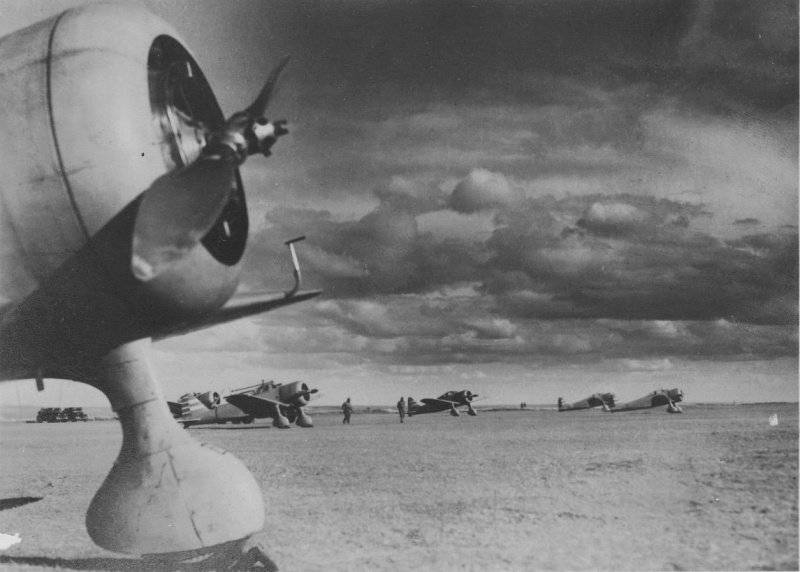
9 May 1939, the head of the Japanese Army’s General Staff, Prince Kanin, presented a report to the emperor, confirming the desire of the ground forces to give the Tripartite Alliance an anti-Soviet focus. The armed conflict on the Khalkhin-Gol river was to check the degree of combat readiness and combat capability of the Soviet troops and test the strength of the Kwantung Army, which received a corresponding reinforcement after the defeat at Lake Hassan. The Japanese command knew that in Germany, Britain and France there was an opinion about the reduction of the Red Army’s combat readiness after the purging of its higher command personnel. In the area of the planned operation, the Japanese concentrated the 23 Infantry Division, whose command cadres were considered experts in the Soviet Union and the Red Army, and its commander, Lieutenant General Komatsubara, was at one time a military attache in the USSR.
In April, an instruction was sent out from the headquarters of the Kwantung Army on the actions of the Japanese units in the border area, where it was prescribed that in cases of border crossing, violators should be immediately destroyed. To implement these goals, even temporary penetration into the territory of the Soviet Union is allowed. In addition, it was pointed out that the commanders of the defense should determine the place of border crossing in those areas where it is not clearly defined and indicate it to the troops of the first line.
The Mongolian-Manchurian state border in this region passed about 20 km east of the river. Khalkhin-Gol, but the commander of the Kwantung Army determined it strictly along the river bank. On May 12, the commander of the 23rd Infantry Division carried out a reconnaissance, after which he ordered the Japanese units to discard the crossed Mongol cavalry detachment for Khalkhin Gol, and on May 13 brought in an infantry regiment with support aviation. On May 28, the 23rd Infantry Division, after a preliminary bombardment, went on the offensive. On May 30, the General Staff of the Army gave the Kwantung Army the first air connection of 1 aircraft, and, in addition, requested the army's needs for people and military materials. The troops of the Kwantung Army began direct preparations for a military conflict.
Aggression against our country and the MPR, thus, was prepared ahead of time. The Japanese side violated the USSR state border more than 1936 times from 1938 to 230, 35 of which were major military clashes. Since January 1939, the state border of the MPR became the object of constant attacks, but military operations with the participation of regular troops of the imperial army began here in mid-May. The balance of power by this time was in favor of the enemy: against 12500 soldiers, 186 tanks, 265 armored vehicles and 82 combat aircraft of the Soviet-Mongolian troops, Japan concentrated 33000 soldiers, 135 tanks, 226 aircraft. However, she did not achieve the planned success: stubborn battles continued until the end of May, and Japanese troops were withdrawn from the state border line.
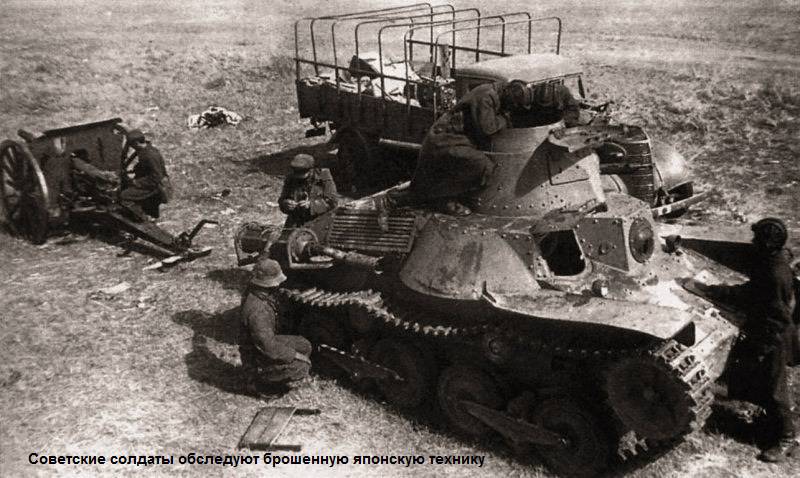
The beginning of hostilities was not very successful for the defenders. The Japanese attack on the eastern part of the state border was unexpected for our command, since it was believed that Japanese troops would begin active operations in the western part of the border, where the Soviet command concentrated our troops.
The negative impact, along with poor knowledge of local conditions, was exerted by the lack of combat experience, especially in the management of units. Extremely unsuccessful were the actions of Soviet aviation. First, due to the fact that the aircraft were obsolete types. Secondly, the airfields were not fully equipped. In addition, there was no communication between aircraft units. And finally, the staff had no experience. This all led to significant losses: the 15 fighters and 11 pilots, while the Japanese had only one car shot down.
Urgent measures were taken to increase the combat capability of the Air Force units. Groups of aces under the command of the comcor Y.V. Smushkevich, they increased the fleet of combat vehicles, radically improved the planning of military operations and their provision. Vigorous measures were also taken to increase the combat capability of parts of the 57-th special rifle corps. At the end of May 1939, a group of commanders headed by comic corps G.K. arrived in Khalkhin Gol. Zhukov, who took command of Soviet troops in Mongolia on June 12.
The first half of June was relatively calm. Taking into account the experience of the May battles, both sides were pulling fresh forces to the area of operations. In particular, the Soviet grouping strengthened, besides other compounds, with two motorized armored brigades (7 and 8). By the end of June, the Japanese concentrated in the Khalkhin Gol area a fully 23 Infantry Division, 2 Infantry Regiment of the 7 Division, 2 Armored Regiment, 3 Cavalry Regiment of the Khingan Division, 200 order of aircraft, artillery and other units.
In early July, the Japanese began the offensive again, wanting to surround and destroy our troops, who were on the eastern bank of the Khalkhin Gol river. The main battles took place near the Bain-Tsagan mountain and continued for three days. In this sector, on both sides, almost 400 tanks and armored vehicles were involved in battles, more than 300 artillery guns and hundreds of combat aircraft. Initially, success accompanied the Japanese troops. Having forced the river, they pressed the Soviet formations, and reached the northern slopes of Bain-Tsagan, and continued to develop success along the western bank of the river, trying to get our troops to the rear. However, the Soviet command, having thrown the 11 tank tank brigade and the 24 motorized rifle regiment into battle, managed to reverse the course of hostilities, forcing the Japanese to begin the retreat in the morning of July 5. The enemy lost up to 10 thousand soldiers and officers, almost all tanks, most of the artillery and 46 aircraft.
On July 7, the Japanese attempted to take revenge, but they did not succeed, moreover, even more 5 people were lost during the 5000 days of fighting. Japanese troops were forced to continue the withdrawal.
In historical literature, these battles are called Bzin-Tsagansky massacre. But for us, these battles were not easy. Only the losses of the 11 Tank Brigade amounted to about a hundred combat vehicles and more than 200 people. Soon the battles resumed and continued throughout July, but they did not lead to any serious changes in the situation. On July 25, the command of the Kwantung Army issued an order to stop the offensive, bring troops and materiel in order and consolidate at the line where the units are currently located. The fighting, which went from June to July, became crucial in the struggle of Soviet aviation for air supremacy. By the end of June, she destroyed about 60 enemy aircraft. If in May the entire 32 combat sorties were made, in which the 491 aircraft participated in total, then from 1 June to 1 July the 74 of the departure (1219 aircraft) took place. And in early July, the number of downed aircraft increased by another 40. Having thus lost around 100 combat vehicles, the Japanese command had to temporarily abandon airborne operations from mid-July.
Having failed to achieve the goals set during the fighting from May to July, the Japanese command intended to solve them by the “general offensive” planned for the end of summer, for which it was carefully and comprehensively prepared. From the new units, which were urgently transferred to the combat area, by August 10 formed the 6 army, numbering 55000 people, more 500 guns, 182 tank, at least 1300 machine guns and more 300 aircraft.
The Soviet command, in turn, also prepared a response. From the Soviet internal military districts, two rifle divisions, a tank brigade, artillery, and support units were transferred to the place of hostilities. By mid-August, the 1 Army Group consisted (including three cavalry divisions of the MPR) to 57 thousand people, 2255 machine guns, 498 tanks and 385 armored vehicles, 542 guns and mortars, more than 500 aircraft. The Soviet-Mongolian troops were given the task of encircling and then destroying the troops of the aggressor that invaded the territory of the Mongolian People's Republic, and restore the Mongolian state border.
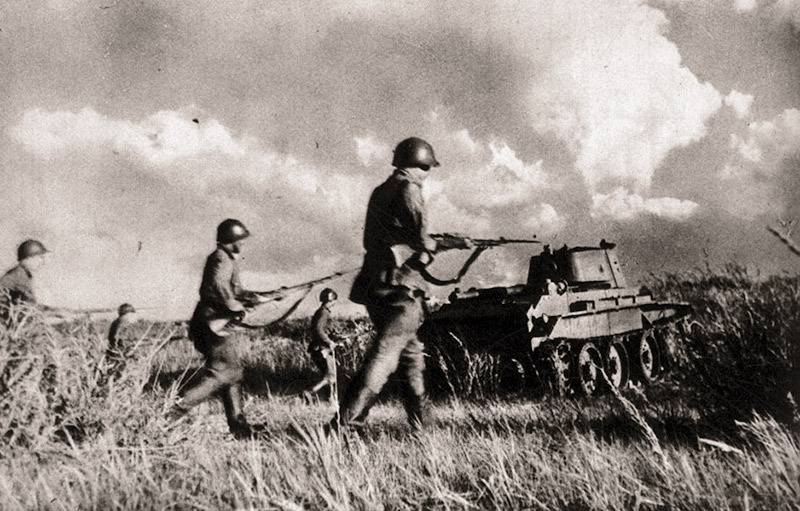
The operation was being prepared in extremely difficult conditions. In view of the considerable remoteness of the combat zone from the railway, it was necessary to transport personnel, military equipment, ammunition, and foodstuffs by car. For a month, about a distance of about 750 km, in off-road conditions, by the heroic efforts of the Soviet people, about 50000 tons of various cargoes and about 18000 people were transferred. Summing up the operation at one of the debriefings, the brigade commander Bogdanov said: "... I must stress here that ... our rear units, our fighters are chauffeurs, our fighters of landmark companies ... all these people showed no less heroism than we all on this front. Not less. Imagine the situation: throughout the 4 months, drivers of cars for 6 days make flights from the front to Solovyovsk and from Solovyovsk to the front. 740 kilometers, and so continuously every day without sleep ... This is the greatest heroism in the rear ... "
Such intense work on the transportation of material resources over a long distance and in difficult climatic conditions made it difficult to carry out regular maintenance and lead to frequent vehicle failures. By September 1939, for example, a quarter of the fleet turned out to be faulty. Before the repair and restoration service was the task in the shortest possible time to put into operation the damaged equipment, to carry out the required repair in the field conditions. And MTO workers successfully coped with this task.
Preparations for the offensive took place under conditions of heightened secrecy, and active and effective measures were taken to disinfect the enemy. For example, the troops were sent a “Memo to the fighter in defense,” written personally by GK Zhukov, false reports on the construction of fortifications were transmitted, all regrouping was carried out only at night and in parts. The noise of relocated tanks, drowned out by the roar of night bombers and the shooting of small weapons. In order to create an impression on the enemy about the strengthening of the Soviet-Mongolian troops in the central sector of the front, the radio stations worked only in the center. The army sound order made imitation of stakes and tank noise, etc.
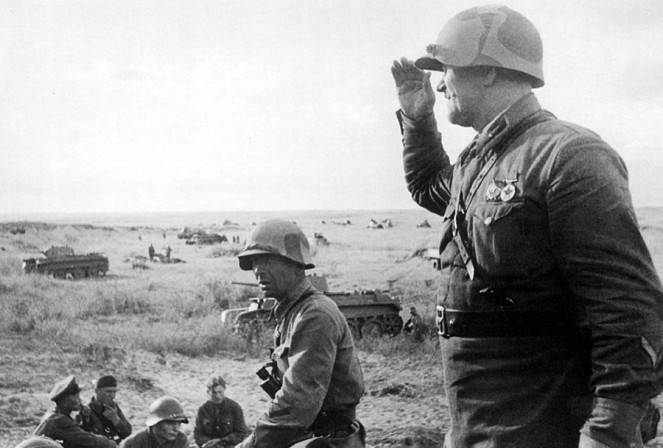
The Japanese command launched a “general offensive” on August 24. But at dawn 20 August, Soviet-Mongolian troops suddenly launched a powerful offensive for the enemy. It began with a powerful bomb strike, which involved more than 300 aircraft. Following him, an artillery preparation was conducted and tank, and then infantry and cavalry units were brought into battle. It is worth noting that the Japanese quickly recovered from the surprise and began stubborn resistance, sometimes even turning into counterattacks. The fights were fierce and bloody. From 20 to 23, August, our troops broke through the Japanese defenses and surrounded the enemy. Attempts by the Japanese to break through the encirclement ring with outside blows were not successful. Having suffered significant losses, deblocking compounds were forced to retreat. On August 27, the encircled troops were dismembered and partially destroyed, and on August 31 the enemy on the territory of Mongolia was completely destroyed.
Despite this, the Japanese continued to fight, and only 16 September, their government admitted defeat. During the fighting, the enemy lost the order of 61000 people killed, wounded and captured, almost 660 aircraft, a large number of various military equipment and equipment. The total losses of the Soviet-Mongolian troops amounted to over 18000 people.
The victory won by 77 years ago in the area of the Khalkhin-Gol river was made possible not only thanks to the competent command of the troops from the command of the modern military equipment of that time, but also to massive heroism. In violent air battles over Khalkhin-Gol Soviet pilots V.F. Skobarihin, A.F. Moshin, V.P. Bushes, having spent ammunition, made air rams and destroyed the enemy. The commander of the 1 Army of the Air Force, Colonel Kutsevalov, noted: “We didn’t have a single incident in the period of hostilities where anyone in a battle would chicken out and leave the battlefield ... We have a whole series of heroic feats that were done before your eyes, when the pilots did not have enough bombs, cartridges, they simply rammed the enemy’s planes, and if they themselves were dying, then the enemy fell ... ”
The exploits of the Soviet soldiers in Mongolian land are calculated not by the dozens or even hundreds. The total number awarded with military orders and medals exceeds 17000 people. Three of them: S.I. Gritsevets, G.P. Kravchenko and Ya.V. Smushkevich - for the second time were awarded the title of Hero of the Soviet Union, 70 soldiers became Heroes of the Soviet Union, Knights of the Order of Lenin - 536, Red Banner Stars - 3224, medals "For Courage" and "For Military Merit" were awarded almost 1102 thousand people. All this served as a sobering lesson for the Japanese leadership, who did not dare to attack the Mongolia or the USSR throughout World War II.
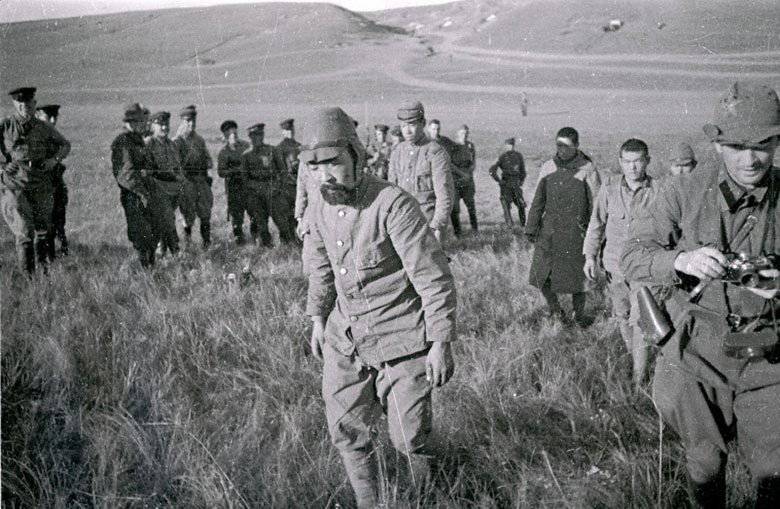
Sources:
Gorbunov, E. A. 20 August 1939. M .: Young Guard, 1986. C. 32-87.
Novikov M. Victory on Khalkhin-Gol. M .: Politizdat, 1971. C. 3-92.
Panasovsky V. Lessons of Hassan and Khalkhin-Gol. M .: Knowledge, 1989. C. 48-56
Vartanov V. There far away from the river. // visage 1988. No.8. C.32-37.
Koshkin A. A. The collapse of the strategy of "ripe persimmon". Japan’s military policy towards the USSR 1931 — 1945 M .: Thought. 1989. C. 24-42.
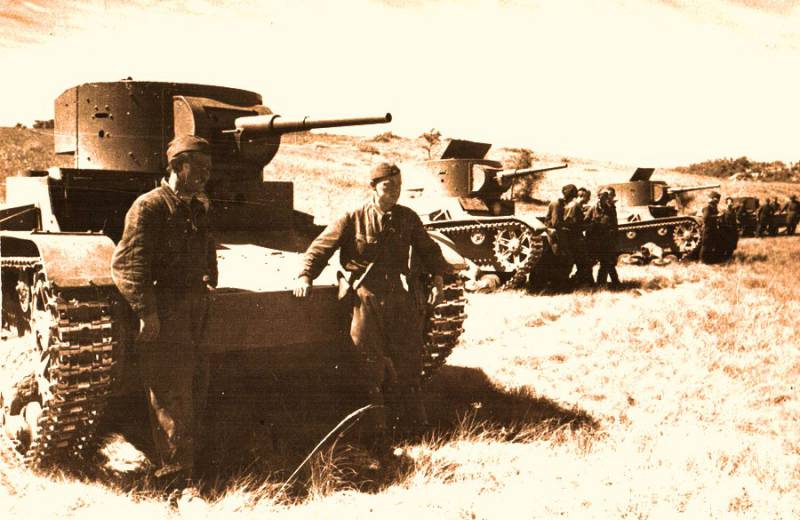


Information